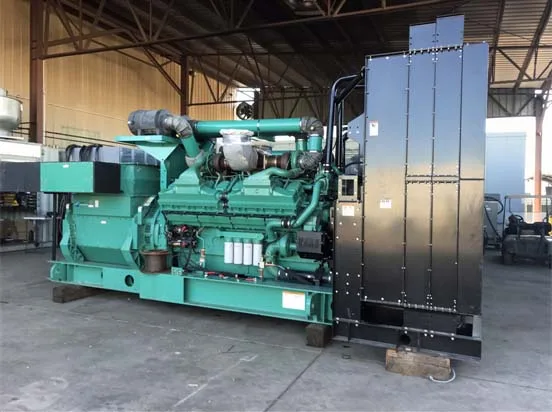Generators are designed to produce a specific electrical frequency, either 50 Hz or 60 Hz, to match the needs of appliances or the power grid they are connected to. Adjusting the generator frequency is important when operating in regions that use different frequency standards. For instance, 60 Hz is common in the US, while 50 Hz is typical in Europe. Here’s how you can convert generator frequencies to supply the correct power:

Generator Speed and Frequency are Proportional
The output frequency of a generator is directly related to the speed of the engine that drives it. To adjust the frequency, you change the engine’s rotational speed. This relationship is captured by the following formula:Generator Frequency(f)=Engine Speed (N)×Number of Poles (P)120\text{Generator Frequency} (f) = \frac{\text{Engine Speed (N)} \times \text{Number of Poles (P)}}{120}Generator Frequency(f)=120Engine Speed (N)×Number of Poles (P)
Conversely, to determine the required engine speed for a given frequency:P=120×fNP = \frac{120 \times f}{N}P=N120×f
Changing Engine Speed to Adjust Output Frequency
For example, a 2-pole generator producing a 60 Hz output runs at 3,600 rpm. To switch the frequency to 50 Hz, the engine speed must be reduced to 3,000 rpm. For a 4-pole generator, a speed of 1,800 rpm produces 60 Hz, while reducing the speed to 1,500 rpm produces 50 Hz.
Adjusting Generator Speed:
- 2-pole generator at 60 Hz: Engine speed = 3,600 rpm.
- 2-pole generator at 50 Hz: Engine speed = 3,000 rpm.
- 4-pole generator at 60 Hz: Engine speed = 1,800 rpm.
- 4-pole generator at 50 Hz: Engine speed = 1,500 rpm.
Altering Engine Speed on Smaller Generators
For small or residential generators, you can change the engine rpm through the generator’s control panel. Here’s how:
- Tune the Frequency Meter: Adjust the control panel to set the frequency to 50 Hz.
- Check Voltage Output: After changing the frequency, measure the AC voltage output. It may drop as you lower the frequency.
- Adjust Voltage Output: If needed, use the control panel to adjust the AC voltmeter or potentiometer until the voltage is at the desired level while maintaining 50 Hz.
To switch from 50 Hz back to 60 Hz, follow the same procedure, adjusting the engine speed accordingly.
Using Frequency Converters for Fixed-Speed Generators
If your generator cannot change engine speed, you can attach a frequency converter to the unit. A frequency converter uses a rectifier and an inverter to modify the output frequency:
- Rectifier: Converts the generator’s AC to DC.
- Inverter: Converts DC back into AC at the desired frequency (either 50 Hz or 60 Hz).
Frequency converters are electronic units, often replacing older electromechanical devices like rotary converters and motor-generator sets. These devices not only change the frequency but also help control the speed and torque of AC motors.
Applications of Frequency Converters:
- Aerospace: Used to convert 50 Hz or 60 Hz power to 400 Hz for aircraft ground power units.
- Industrial: Employed to control fan and pump speeds or other variable torque loads.
Electronic Variable Speed Gensets
Another solution is the electronic variable speed genset. In these systems, varying the engine speed changes the alternator’s speed, producing an output frequency that is automatically adjusted. This frequency is then rectified by an inverter to match the required output frequency.
Advantages:
- Eliminates the need for a variable speed drive and transformer.
- Ideal for certain applications but can be costly and unsuitable for harsh environments.
Difference from CVT Gensets:
- Variable Speed Gensets with CVT: These gensets adjust engine speed but maintain a constant alternator speed, so the output frequency remains fixed. Instead, they adjust output power to match varying load demands.
By adjusting engine speed or using external frequency converters, you can easily modify a generator’s output to match the required frequency, ensuring compatibility with the appliances or grid systems in use.